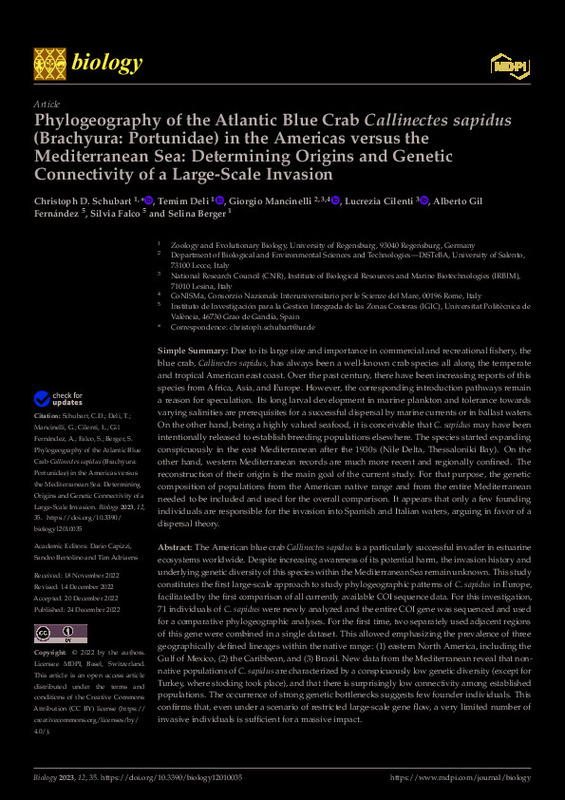JavaScript is disabled for your browser. Some features of this site may not work without it.
Buscar en RiuNet
Listar
Mi cuenta
Estadísticas
Ayuda RiuNet
Admin. UPV
Phylogeography of the Atlantic Blue Crab Callinectes sapidus (Brachyura: Portunidae) in the Americas versus the Mediterranean Sea: Determining Origins and Genetic Connectivity of a Large-Scale Invasion
Mostrar el registro completo del ítem
Schubart, CD.; Deli, T.; Mancinelli, G.; Cilenti, L.; Gil-Fernández, A.; Falco, S.; Berger, S. (2023). Phylogeography of the Atlantic Blue Crab Callinectes sapidus (Brachyura: Portunidae) in the Americas versus the Mediterranean Sea: Determining Origins and Genetic Connectivity of a Large-Scale Invasion. Biology. 12(1):1-18. https://doi.org/10.3390/biology12010035
Por favor, use este identificador para citar o enlazar este ítem: http://hdl.handle.net/10251/192358
Ficheros en el ítem
Metadatos del ítem
| Título: | Phylogeography of the Atlantic Blue Crab Callinectes sapidus (Brachyura: Portunidae) in the Americas versus the Mediterranean Sea: Determining Origins and Genetic Connectivity of a Large-Scale Invasion | |
| Autor: | Schubart, Christoph D. Deli, Temim Mancinelli, Giorgio Cilenti, Lucrezia Gil-Fernández, Alberto Berger, Selina | |
| Entidad UPV: |
|
|
| Fecha difusión: |
|
|
| Resumen: |
[EN] Due to its large size and importance in commercial and recreational fishery, the blue crab, Callinectes sapidus, has always been a well-known crab species all along the temperate and tropical American east coast. Over ...[+]
|
|
| Palabras clave: |
|
|
| Derechos de uso: | Reconocimiento (by) | |
| Fuente: |
|
|
| DOI: |
|
|
| Editorial: |
|
|
| Versión del editor: | https://doi.org/10.3390/biology12010035 | |
| Tipo: |
|









